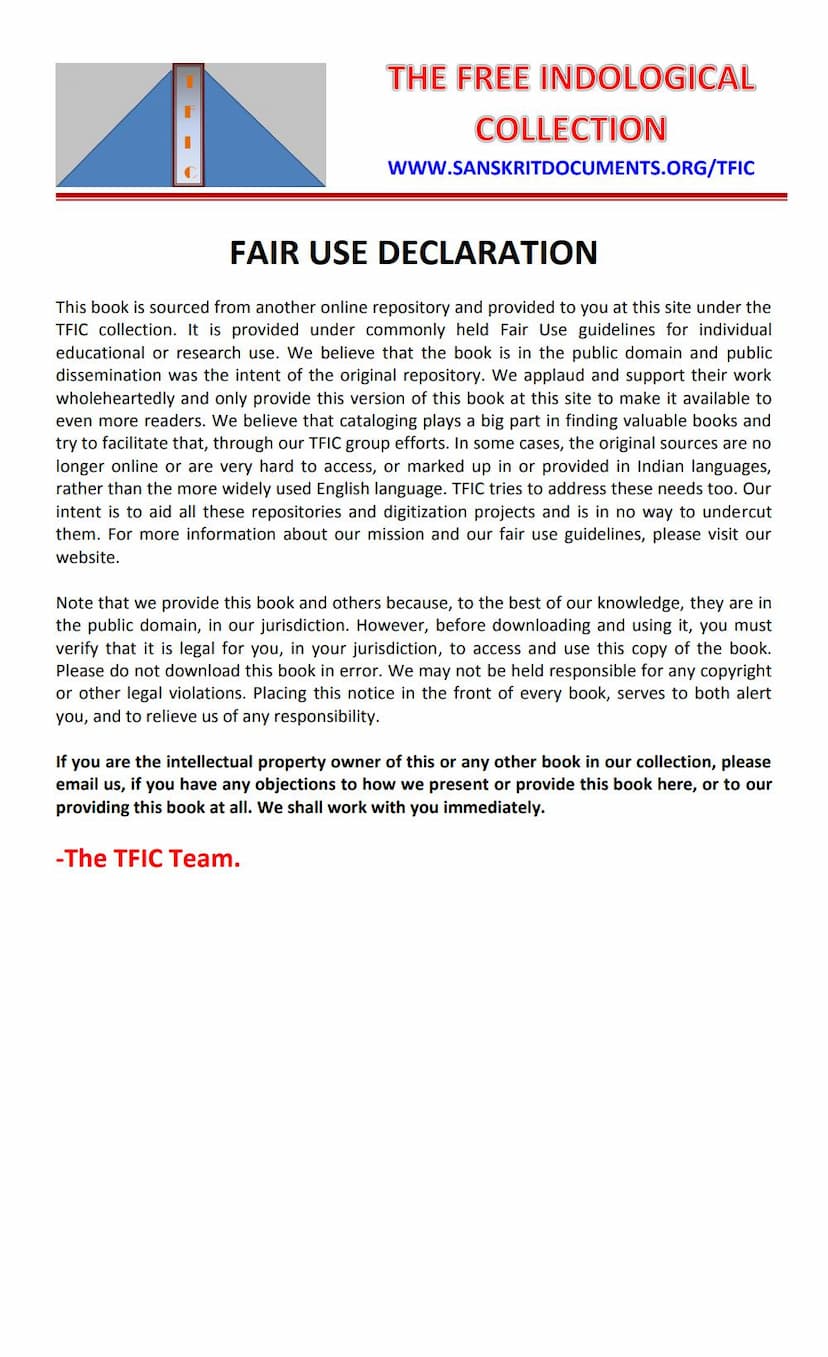Samyaktva Vimarsh
Added to library: September 2, 2025

Summary
Here's a comprehensive summary of the Jain text "Samyaktva Vimarsh" by Ratanlal Doshi:
Title: Samyaktva Vimarsh (Discourse on Right Faith) Author: Ratanlal Doshi Publisher: Akhil Bharatiya Sadhumargi Jain Sanskruti Rakshak Sangh Catalog Link: https://jainqq.org/explore/010468/1
Overview:
"Samyaktva Vimarsh" is a foundational text in Jainism that delves deeply into the concept of Samyaktva, which translates to Right Faith or Right Understanding. The book emphasizes that Samyaktva is the cornerstone of the Jain path to liberation (moksha). It argues that without right faith, all other spiritual practices, however rigorous, are ultimately futile. The text aims to clarify what constitutes genuine Samyaktva, differentiate it from its opposite, Mithyatva (wrong faith), and provide guidance on how to attain, preserve, and strengthen it.
Key Themes and Concepts:
-
The Primacy of Samyaktva: The book starts by asserting that Samyaktva is the gateway to the spiritual mansion of Jainism. It is the essential first step towards the ultimate goal of liberation. Without it, even profound asceticism and knowledge are considered incomplete and incapable of leading to liberation.
-
Understanding Mithyatva (Wrong Faith): The text extensively analyzes Mithyatva, explaining how it distorts the soul's perception, leading it to mistake friends for foes and vice versa. It describes various forms of Mithyatva, including doubts, complacency, admiration of wrong paths, and misinterpreting or misrepresenting religious principles.
-
The Necessity of Correct Vision (Yatharth Drishti): A significant portion of the book is dedicated to explaining the importance of having the right perspective. It argues that most conflicts in the world stem from differences in vision. True vision in Jainism involves understanding the true nature of reality, the distinction between the soul (jiva) and non-soul (ajiva), the causes of bondage, and the path to liberation.
-
Samyaktva as the Foundation: The book meticulously explains the elements that nourish and strengthen Samyaktva, such as contemplating the virtues of the Tirthankaras, serving the righteous, renouncing wrong paths and associations, and internalizing the teachings of the omniscient beings.
-
Distinguishing True from False: The author, Ratanlal Doshi, meticulously guides the reader through complex philosophical points, distinguishing genuine spiritual understanding from its counterfeits. This includes:
- Theological Evaluation: Critically examining the nature of deities and spiritual guides, emphasizing the need for Vitaraga (passionless) and omniscient beings as true objects of worship and guidance.
- The Importance of Agamas: Stressing that the authentic teachings of the omniscient Tirthankaras, as preserved in the Agamas, are the ultimate source of truth.
- Dangers of Superficiality: Warning against mistaking outward appearances, rituals, or mere intellectual knowledge for true Samyaktva.
- The Subtle Nature of Mithyatva: Highlighting how Mithyatva can be seductive, often appearing in attractive or plausible forms, making it essential to exercise discernment.
-
Categorization of Mithyatva: The book provides a detailed classification of various types of wrong faith (Mithyatva), including:
- Anabhigrahik Mithyatva: Lack of determined faith, easily swayed.
- Abhigrahik Mithyatva: Stubborn adherence to wrong beliefs.
- Anavishayik Mithyatva: Unquestioning acceptance without examination.
- Various Forms of Misconduct: Identifying specific errors like Shanka (doubt), Kanksha (desire/envy), Vichikitsa (disgust/complacency), Param-paropadesha (praise of wrong paths/teachers), and Param-paropadesha parichaya (association with wrong paths/teachers).
- Misidentification: Mistaking the non-soul (ajiva) for the soul (jiva), or the un-virtuous for the virtuous.
- Misunderstanding of Path: Believing wrong paths to be right and vice versa.
-
The Role of Inner Transformation: The text emphasizes that true Samyaktva is not just an intellectual acceptance but a profound inner transformation, leading to a change in vision and behavior.
-
The Relentless Struggle for Samyaktva: The book acknowledges the rarity of Samyaktva and the constant vigilance required to maintain it against the pervasive influence of Mithyatva and the fluctuations of one's own disposition (Udaya of karmas).
-
The Importance of Sincere Practice: The author highlights that while understanding is crucial, sincere practice and unwavering faith, even if intellectual knowledge is limited, are essential. The text quotes scriptures to show that unwavering faith in the teachings of the Tirthankaras is paramount.
-
The Need for Critical Evaluation: While advocating for faith in Jain principles, the book also encourages critical thinking and discernment. It warns against blind adherence to traditions or personalities that might deviate from the core teachings.
-
The Pillars of Samyaktva: The book identifies key practices that support Samyaktva, including:
- Understanding the Nine Tattvas: Correctly grasping the essence of soul, non-soul, influx, bondage, merits, demerits, cessation of influx, liberation, and their respective nature.
- Adherence to Righteousness: Following the path prescribed by the Tirthankaras, characterized by righteousness, non-violence, truthfulness, non-stealing, celibacy, and non-possession.
- Renunciation of Wrong Paths: Actively avoiding association with false doctrines, teachers, and practices that lead away from liberation.
Structure and Content:
The book is structured as a detailed discourse on Samyaktva, covering its essential nature, its benefits, the pitfalls of Mithyatva, and practical guidance for its cultivation. It uses scriptural references, philosophical arguments, and practical examples to illustrate its points. The table of contents reveals a comprehensive exploration of the subject, addressing various facets and potential challenges faced by a spiritual seeker.
Target Audience and Impact:
"Samyaktva Vimarsh" is intended for all followers of Jainism, especially those seeking a deeper understanding of their faith. It aims to fortify the conviction of believers, guide the curious, and provide a clear framework for spiritual progress. By elucidating the profound importance of right faith, the book serves as an invaluable guide for anyone aspiring to tread the path of Jain spirituality towards ultimate freedom.
In Essence:
"Samyaktva Vimarsh" is a profound and detailed exploration of the central Jain principle of Right Faith. It meticulously dissects the nature of true faith (Samyaktva) and the various forms of delusion (Mithyatva), underscoring the transformative power of correct vision. The book is a comprehensive guide for strengthening one's spiritual foundation, essential for anyone serious about achieving liberation in the Jain tradition.